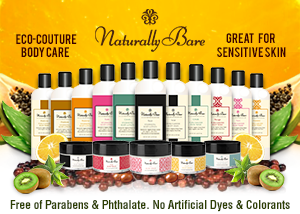Holding Suppliers Accountable
You’ve seen the claims. “Biodegradable.” “Non-toxic.” “Ozone friendly.” Trying to separate attributes from overblown claims is tough. To help sort through the maze, here are some guidelines for labeling and marketing from the EPA (Environmental Protection Agency) and the FTC (Federal Trade Commission).
Unless vague, broad claims like “environmentally friendly” or “environmentally safe” can be substantiated, the FTC’s “Guides for the Use of Environmental Marketing Claims” says, don’t use them…and don’t accept their claims from your suppliers.
More specifically, the FTC guidelines have set forth four principles for green marketing and labeling:
• DISCLOSURES. “Clear and prominent qualifications and disclosures.”
• DISTINGUISH. “Distinguish between attributes of product, package, and service.”
• CLARITY. “Basis for comparisons must be clear.”
Here’s one example of how a common claim—environmentally friendly product—can be misused, and how it can be corrected.
• MISLEADING: A paper is advertised as environmentally friendly. However, though it contains recycled fiber, the process used to produce the paper still releases toxic materials. As a result, this environmentally friendly claim is misleading.
• ACCEPTABLE. It would have been OK if the paper claimed it was “30 percent recycled fiber.”
The FTC guidelines include specific examples of what is acceptable and what is not. What about an advertiser that claims its new bottle contains “20 percent more recycled content?”
According to the guidelines, in that content, the claim is ambiguous. “Depending on contextual factors, it could be a comparison either to the advertiser’s immediately preceding product or to a competitor’s product. The advertiser should clarify the claim to make the basis for comparison clear–for example, by saying ’20 percent more recycled content than our previous package.’ Otherwise, the advertiser should be prepared to substantiate whatever comparison is conveyed.”
In another example, the guidelines refer to the use of a brand name like “Eco-Safe,” stating it would be deceptive if, in the context of a product so named, it leads customers to believe that the product has environmental benefits that can’t be substantiated by the manufacturer.
According to the guidelines, “The claim would not be deceptive if ‘Eco-Safe’ were followed by clear and prominent qualifying language limiting the safety representation to a particular product attribute for which it could be substantiated, and provided that no other deceptive implications were created by the context.”
Following are more examples of claims, when they are OK to use, and when they are not.
• ENVIRONMENTALLY SAFE. Let’s say a particular pump spray product is labeled “environmentally safe,” though most of the product’s active ingredients consist of volatile organic compounds (VOCs) that may cause smog by contributing to ground-level ozone formation. According to the guidelines, “The claim is deceptive because, absent further qualification, it is likely to convey that use of the product will not result in air pollution or other harm to the environment.”
• BIODEGRADABLE. A given soap product is advertised as “biodegradable,” with no qualification or other disclosure. This claim is not, however, deemed as deceptive IF the manufacturer in question “has competent and reliable scientific evidence demonstrating that the product, which is customarily disposed of in sewage systems, will break down and decompose into elements found in nature in a short period of time.”
For more info, go to: www.ftc.gov/bcp/grnrule/guides980427.htm


CONNECT WITH US